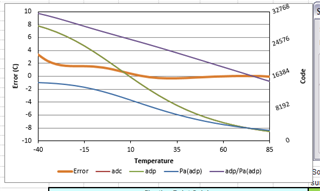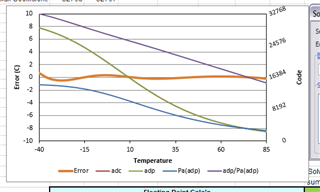What accuracy (in +/- deg C) can be expected using an external 10k NTC thermistor (e.g. 103AT-2). If needed, for simplicity, the accuracy of the NTC itself can be ignored. If not, the application in question uses an R25 = 10k +/- 1% and B25/85 = 3435 +/- 1% part. Specifically, I'm interested in the accuracy at -30 C. Alternately, what is the size and tolerance of the internal pull-down resistor (which is in parallel to the NTC)? Thanks in advance!
-
Ask a related question
What is a related question?A related question is a question created from another question. When the related question is created, it will be automatically linked to the original question.





